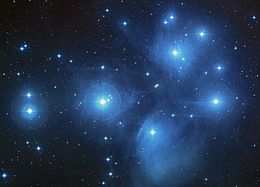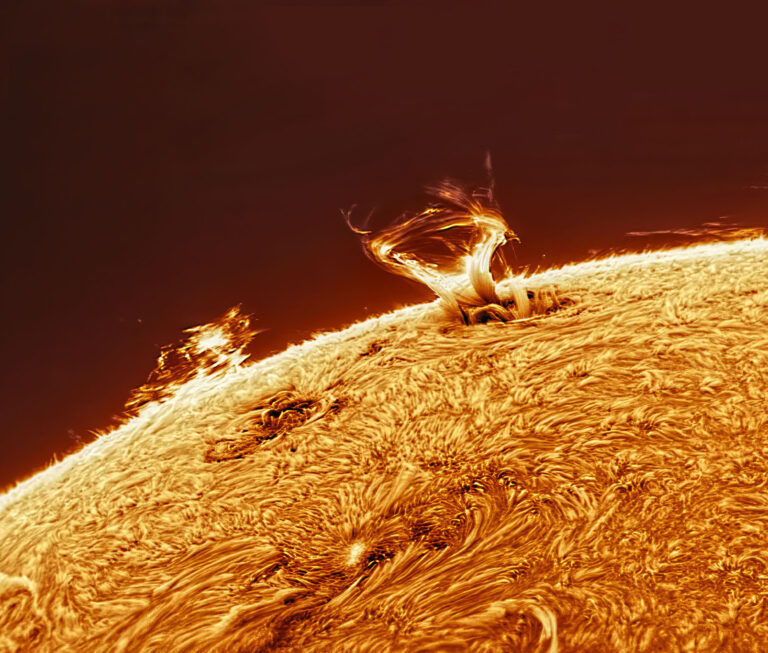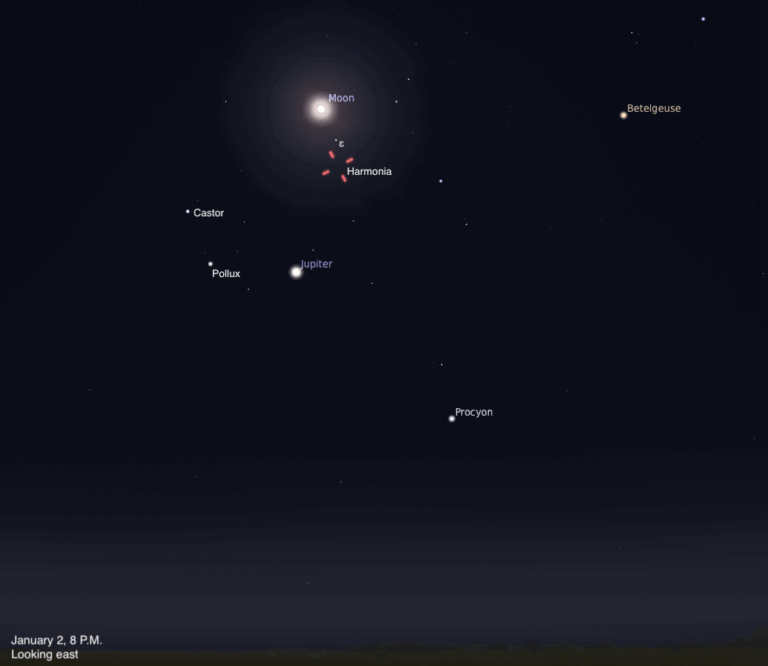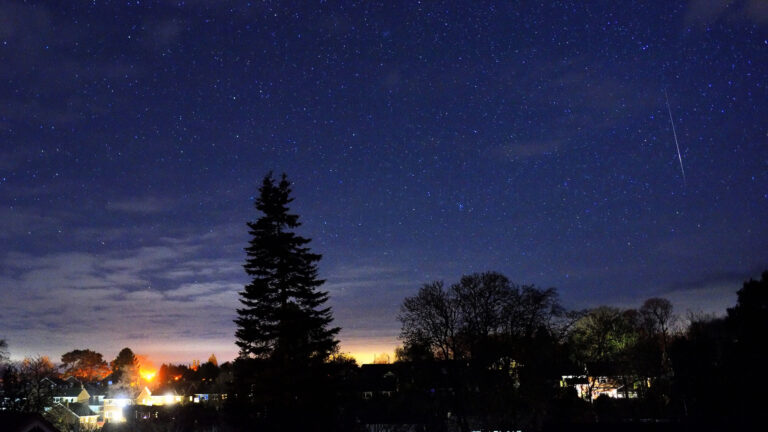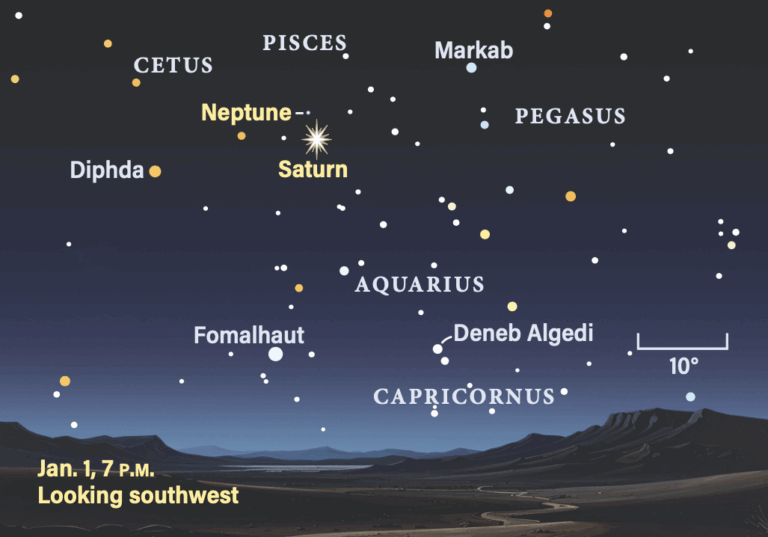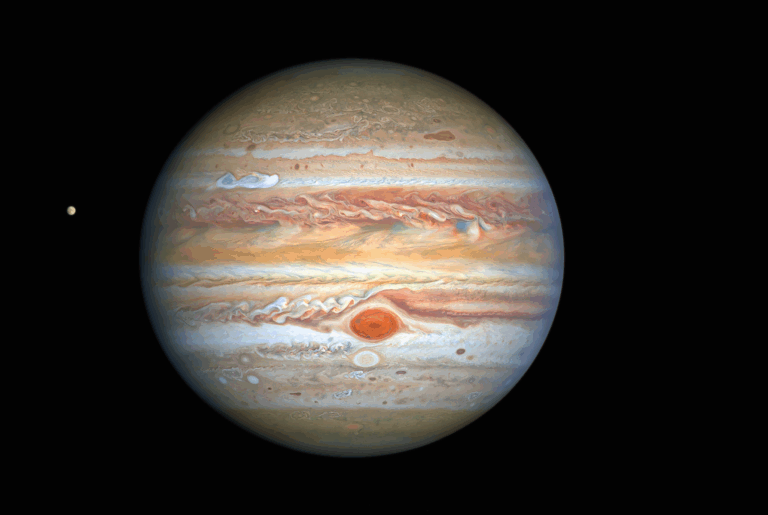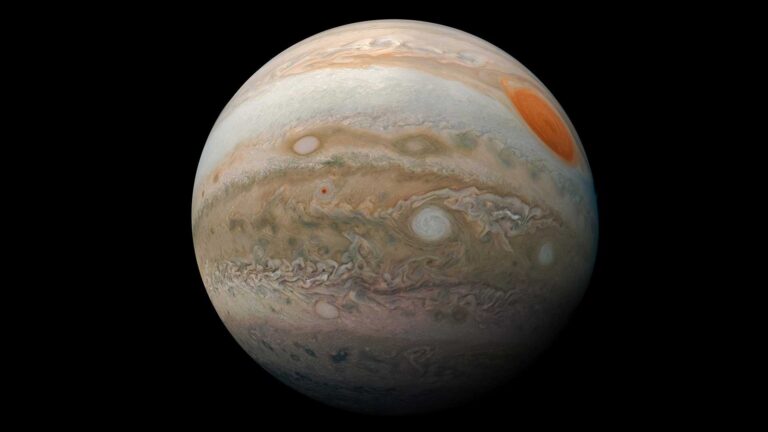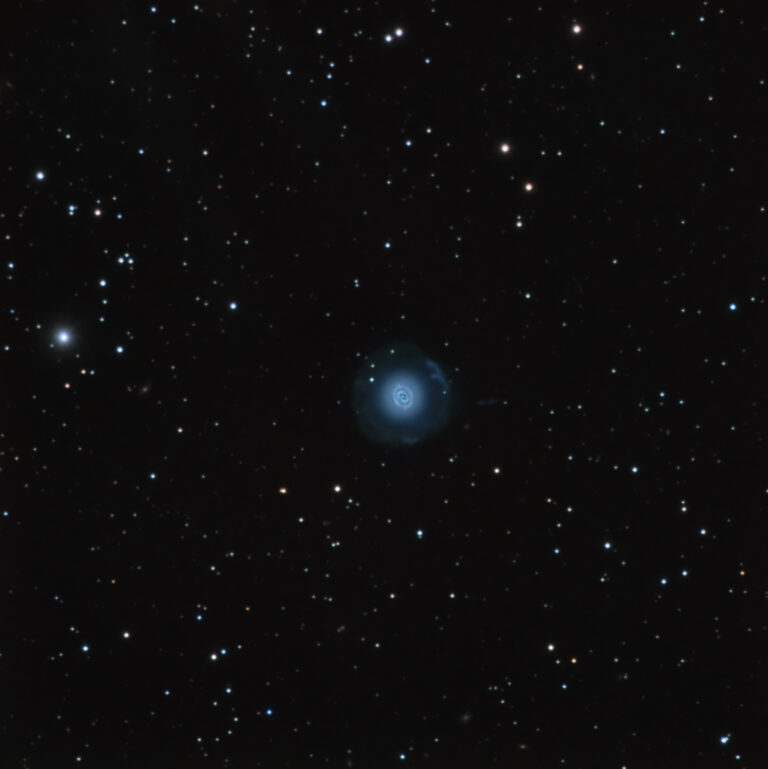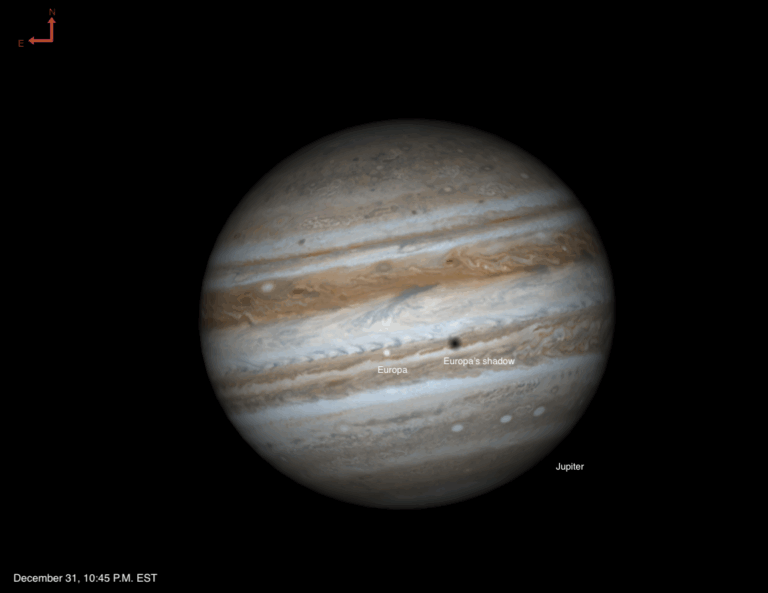Key Takeaways:
Friday, January 27
The variable star Algol in Perseus appears faintest at 2:15 a.m. EST tomorrow morning, when it shines at magnitude 3.4. If you start watching it right after darkness falls this evening, you can see it dim from its peak brightness (magnitude 2.1) to minimum and then start to rebound in a single night. This eclipsing binary star runs through a cycle from minimum to maximum and back every 2.87 days, but the drop from peak brightness and subsequent rise lasts only about 10 hours. Algol appears nearly overhead soon after darkness falls and descends toward the northwestern horizon after midnight.
New Moon occurs at 7:07 p.m. EST. At its New phase, the Moon crosses the sky with the Sun and so remains hidden in our star’s glare.
Saturday, January 28
Mercury remains a conspicuous sight during predawn twilight. This morning, the innermost planet lies 7° above the southeastern horizon 30 minutes before sunrise. Shining at magnitude –0.2, the planet shows up nicely in the twilight glow. (If you don’t see it right away, binoculars will bring it into view.) Mercury’s disk spans 6″ and appears about three-quarters-lit when viewed through a telescope.
Sunday, January 29
Although the Moon reached its New phase just two days ago, its rapid orbital motion carries it into view after the Sun goes down this evening. Look low in the west-southwest about an hour after sunset and you’ll see its 4-percent-lit crescent hanging in the twilight like the smile of the Cheshire Cat.
Monday, January 30
Two of the finest deep-sky objects shine prominently on January evenings. The Pleiades and Hyades star clusters appear highest in the south in early evening but remain conspicuous until after midnight. The Pleiades, also known at the Seven Sisters and M45, looks like a small dipper to naked eyes. The larger Hyades forms the V-shaped head of Taurus the Bull. Although both look nice with the naked eye, binoculars show them best.
Tuesday, January 31
The waxing crescent Moon forms a tight triangle with Venus and Mars this evening. The stunning trio lies about 30° above the southwestern horizon an hour after sunset. Venus, which shines brilliantly at magnitude –4.7, shows up easily about 5° to the Moon’s right. Although magnitude 1.1 Mars appears the dimmest of the three, it still stands out nicely 2° above the 17-percent-lit Moon. Binoculars capture them all in a single field of view. If you turn a telescope on the planets, Venus spans 31″ and appears 40 percent illuminated while Mars shows a bland disk measuring 5″ across.
Wednesday, February 1
The waxing crescent Moon appears to the upper left of Mars and Venus after sunset. The three objects form a nearly straight line, with our satellite 12° from Mars and 17° from Venus. The Sun now illuminates 26 percent of the Moon’s Earth-facing hemisphere, a noticeable difference from last night.
Saturn rises three hours before the Sun and climbs some 15° high in the southeast by the time morning twilight begins. The ringed planet shines at magnitude 0.5 among the much fainter background stars of Ophiuchus the Serpent-bearer. When viewed through a telescope, Saturn shows a 16″-diameter disk surrounded by a stunning ring system that spans 35″ and tilts 27° to our line of sight.
Thursday, February 2
Jupiter rises around 11 p.m. local time and climbs highest in the south about an hour before morning twilight commences. The giant world shines at magnitude –2.2 against the backdrop of central Virgo, some 4° north of that constellation’s brightest star, 1st-magnitude Spica. Even a small telescope reveals the planet’s 39″-diameter disk and four bright moons. But this morning, viewers get a bonus because the gas giant appears to have a “black eye.” It is actually the dark shadow of Ganymede, the solar system’s largest moon, which crosses Jupiter’s north polar region from 1:51 to 4:25 a.m. EST.
For those who believe in folklore, the fate of winter rests on the shoulders of the groundhog. If the furry rodent sticks his head out of his burrow this morning and sees his shadow, we’ll have six more weeks of winter. But if the weather is cloudy, it means spring is right around the corner. What does this have to do with astronomy? Groundhog Day celebrates one of the four so-called cross-quarter days, which mark the midpoints between the solstices and equinoxes. February 2 falls approximately midway between the winter solstice and the vernal equinox.
Friday, February 3
First Quarter Moon arrives at 11:19 p.m. EST. You can find the half-lit orb high in the south as darkness falls and then watch it sink toward the western horizon throughout the evening hours. The Moon spends the evening hugging the border between the constellations Aries the Ram and Cetus the Whale.
Saturday, February 4
Although asteroid 4 Vesta reached opposition and peak visibility in mid-January, the brightest minor planet of 2017 still shines at magnitude 6.6 and shows up quite easily through binoculars. To find the minor planet, start at magnitude 1.2 Pollux in northern Gemini and then drop 3.6° due south to magnitude 3.6 Kappa (k) Geminorum. Vesta lies 0.6° north and a touch west of Kappa this evening.
Sunday, February 5
The waxing gibbous Moon lies just east of the 1st-magnitude star Aldebaran this evening. Depending on where in North America you live, the gap appears to be between 1° and 3° in early evening and grows a bit more than 0.5° every hour thereafter. Aldebaran represents the eye of Taurus the Bull and appears to mark one tip of the V-shaped Hyades star cluster. In reality, Aldebaran lies only about half as far from Earth as the cluster does.


